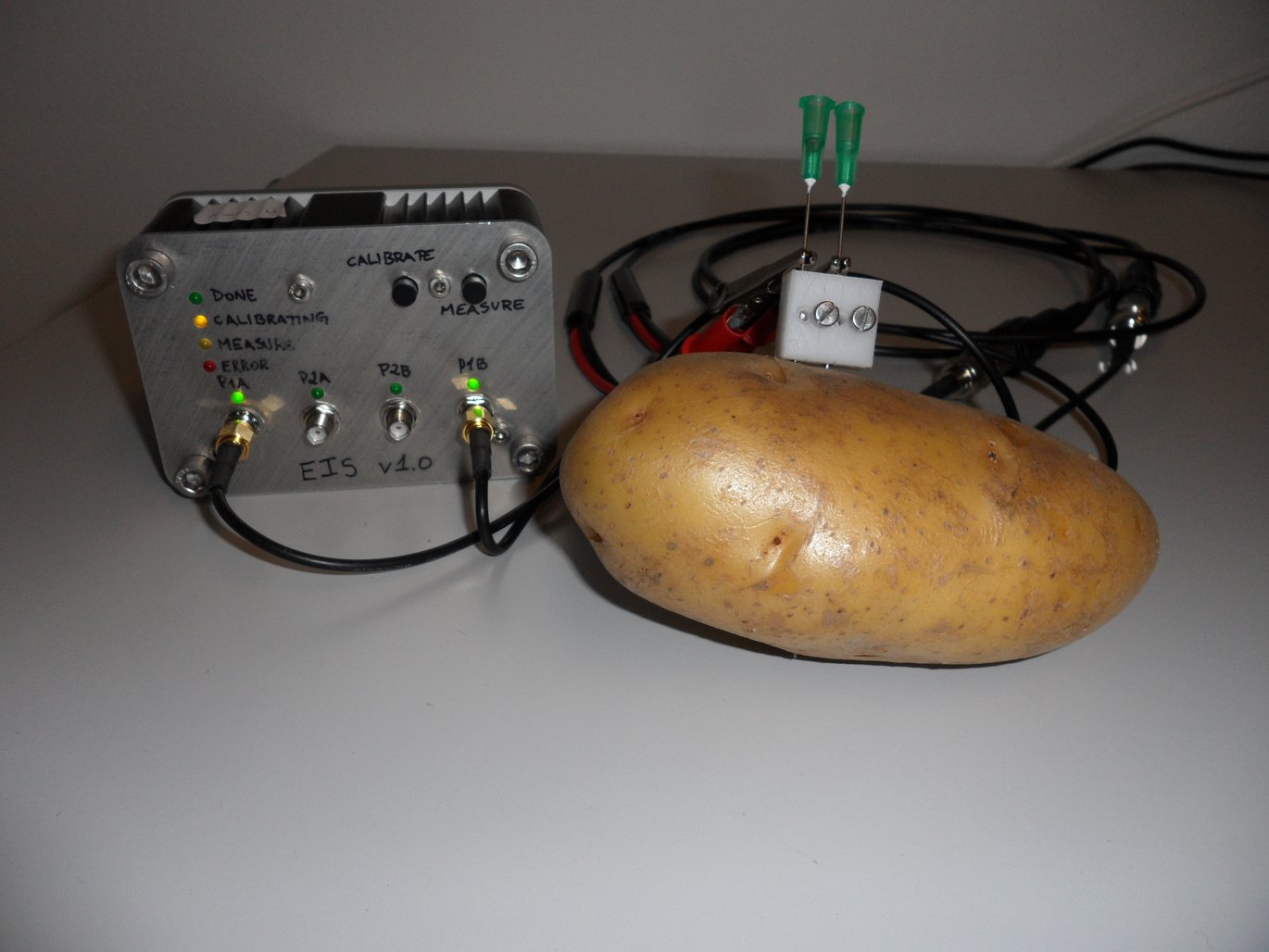Potatoes charged to reveal their content
Scientists are running electric currents through potatoes to reveal tuber contents and distribution of, among other things, water, starch and sugar. This means the production can much more quickly be adjusted to the most suitable end use for the potatoes.

A scientist from Aarhus University zaps potatoes with an electric current to determine their end use. The potatoes do not become electric, but they reveal their contents and distribution of relevant substances such as water, starch and sugar, and whether they have hidden internal injuries. The method developed in the project will make it easier to determine whether the destiny of the potatoes should be chips, starch or ware production.
The three-year research project is has a total budget of 2.8 million DKK and is funded by the Advanced Technology Foundation, Aarhus University, who is leading the project, and the grading machine manufacturers Newtec A/S.
The secrets of potatoes are revealed by means of a technique called bioelectric impedance. Bioimpedance is the transmission of electric pulses of different frequencies through a substance, such as the potato, and measuring how the pulses move through the tuber. The biological tissue of potato has different electrical resistances depending on the properties of the tissue.
The scientist expects to get different deflections for different qualities of potatoes, depending on the potato content and distribution of water, sugar, starch and other substances. The development work consists of calibrating the bioimpedance measurements with traditional methods of measurement for various grades of potato and partly in the further development of the apparatus and devising a method of calculation.
Anders Kjær from Aarhus University is in charge of the programme of measurements and calibrations while Newtec is responsible for developing a user-friendly measuring device and a calculation model. Data from measurements will be connected to a web-based database so the calculation model can be continuously improved with the receipt of new input.
- When the method and apparatus are fully developed, we can get much faster results than with chemical analyses of the potatoes, says the leader of the project postdoc Anders Kjær from Aarhus University.
Further information: Postdoc Anders Kjær, Department of Food Science, e-mail: anders.kjaer@agrsci.dk, telephone: +45 8715 8391
